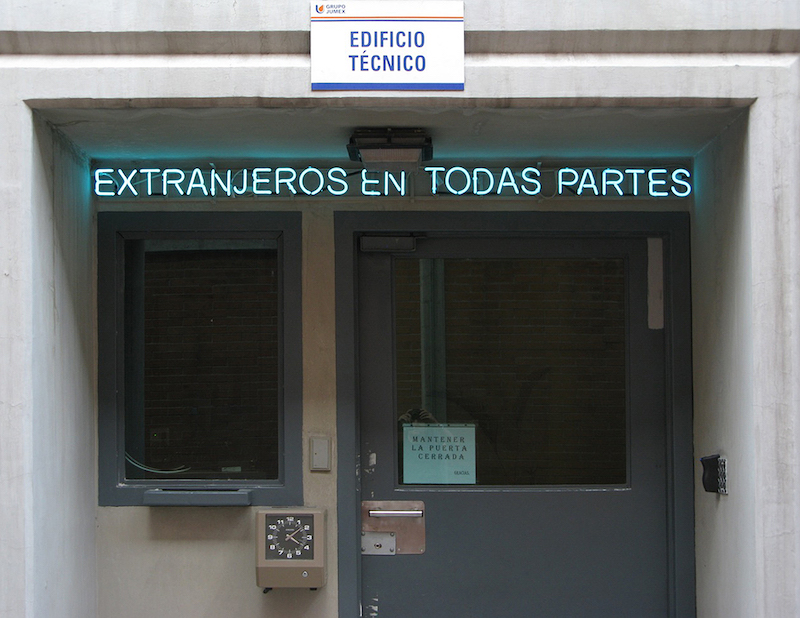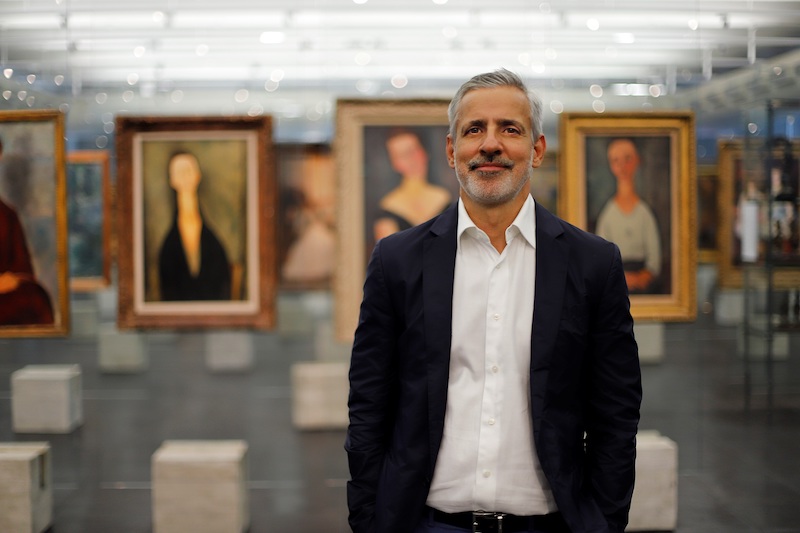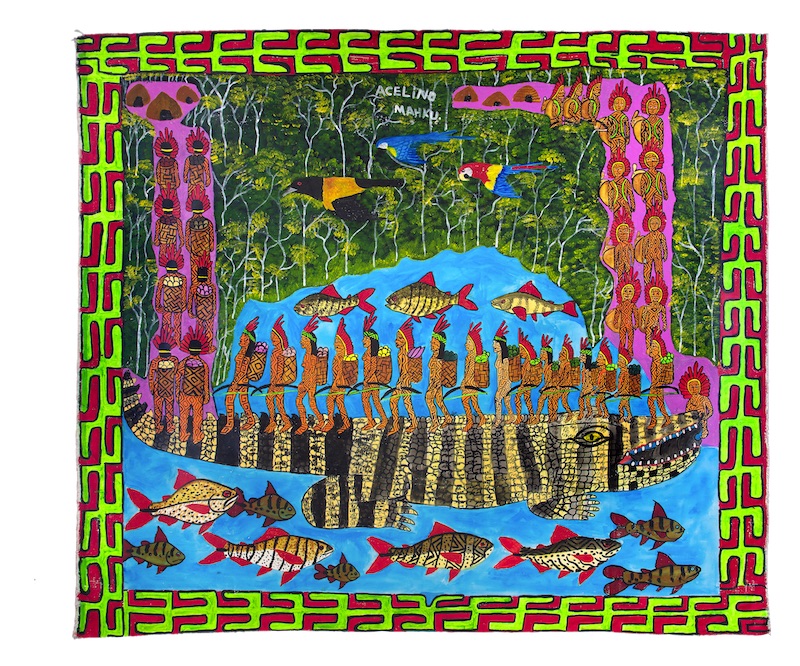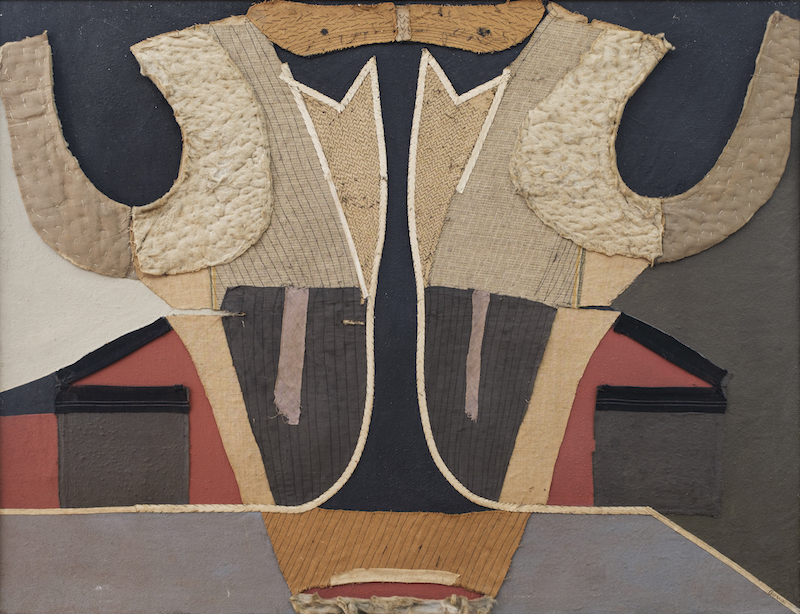by Ananyaa Sathyanarayana // Mar. 15, 2024
“Wherever you go and wherever you are, you will always encounter foreigners—they/we are everywhere. Furthermore, no matter where you find yourself, you are always truly, and deep down inside, a foreigner.” Adriano Pedrosa, the curator of this year’s Venice Biennale, explains the theme of the anticipated international art exhibition—‘Stranieri Ovunque – Foreigners Everywhere’—the title of which is drawn from a series of neon sculptural pieces by the Claire Fontaine collective. The series of works, which began in 2004, presents the words “foreigners everywhere” in a multitude of colors and languages. The phrase originally came from the name of a Turin-based collective, who fought racism and xenophobia in Italy in the early 2000s. With this conceptual backdrop in mind, the Biennale will open its doors to the public on April 20th and run until November 24th, 2024.

Claire Fontaine: ‘Foreigners Everywhere – Spanish,’ 2007, suspended, wall or window mounted neon, framework, electronic transformer and cables, installation view, 98 × 2.16 × 45 cm, ‘The Traveling Show,’ curated by Adriano Pedrosa, La Colección Jumex, Mexico // Photo by Studio Claire Fontaine, © Studio Claire Fontaine, courtesy of Claire Fontaine and Mennour, Paris
Pedrosa, who is originally from Brazil, is the director of the São Paulo Museum of Art (MASP) and is the first South American to curate the art Biennale in Venice. In order to really elaborate on this narrative of migration and cultural expansion brought by foreigners, the exhibition showcases artists from all over the world. This year, the Biennale overwhelmingly favors artists who have never participated in its exhibition before. Special attention is also being given to outdoor projects, both in the Arsenale and in the Giardini, where a performance program is planned, with events during the pre-opening and closing weekend of the 60th edition. For this iteration, Pedrosa has chosen to split the exhibition into two sections: the ‘Nucleo Contemporaneo’ and the ‘Nucleo Storico.’

Adriano Pedrosa, portrait // Photo by Daniel Cabrel, courtesy of Museu de Arte de Sao Paulo Assis Chateaubriand
As in many Romantic languages, the Italian word for foreigner (“straniero”) is etymologically connected to “strano”—the stranger. Drawing on the Freudian notion of the stranger within (oneself, society), the ‘Nucleo Contemporaneo’ section considers the production of four subjects: the queer artist, the outsider artist, the folk artist, and the indigenous artist. Indigenous artists play a central role in the exhibition this year, with a monumental mural by the Brazilian Mahku collective greeting visitors on the Central Pavilion’s façade. Stretched on the south side of the Arsenale, the Corderie was once used to build mooring ropes, cables and ropes used on ships. Now, it serves as an exhibition space for the Biennale and this year it will feature a large-scale installation by the Maataho collective from Aotearoa/New Zealand. The Corderie will also feature a section devoted to the ‘Disobedience Archive’—a video archive project by Marco Scotini, focusing on the relationships between artistic practices and activism, which includes works by 39 artists and collectives made between 1975 and 2023.

MAHKU (Movimento dos artistas Huni Kuin): ‘Kapenawe pukenibu,’ 2022, acrylic on canvas, 140 x 115 cm, Acelino Huni Kuin (Terra Indígena do Alto Rio Jordão, Jordão, Acre, Brasil, 1975) / Movimento dos Artistas Huni Kuin (MAHKU) / Ibã Huni Kuin (Terra Indígena do Alto Rio Jordão, Jordão, Acre, Brasil, 1964) // Photo by Daniel Cabrel, courtesy of Museu de Arte de São Paulo – MASP
The ‘Nucleo Storico’ will be more oriented towards works from 20th century Latin America, Africa, the Middle East and Asia. Works will feature the Global South with a highlight placed on modernism within these territories. The ‘Nucleo Storico’ will be separated into three different rooms: ‘Portraits,’ which includes works from 112 artists spanning the years of 1905 and 1990; ‘Abstractions,’ which includes 37 artists, most of whom are being exhibited together for the first time; and, lastly, ‘The worldwide Italian artistic diaspora in the 20th century,’ which is comprised of works by 40 artists who are first or second generations Italians, exhibited in Lina Bo Bardi’s glass easel display system.
Pedrosa notes that a trend towards textiles, craft, tradition, the handmade—techniques that were considered strange in the larger field of fine arts—seemed to come together organically with the production of the ‘Nucleo Storico’ and the ‘Nucleo Contemporaneo’ exhibition sections.

Bona Pieyre de Mandiargues: ‘Toro Nuziale,’ 1958, assemblage, 90 x 116 x 2.5 cm // Courtesy of Sibylle Pieyre de Mandiargues, private collection
This year, the Biennale spotlights foreigners in every sense of the word, from those who are outsiders in society to immigrants, expats and tourists. The exhibition brings forth conversations around this inescapable aspect of being human: a foreign feeling that, while sometimes unnerving, can also be exciting. The international outlook of ‘Stranieri Ovunque – Foreigners Everywhere’—with a special emphasis on indigenous artists and artists from the Global South—speaks to the need to consider those cultural elements that have been marginalized and discarded by Eurocentric artistic traditions, especially in the context of the Venice Biennale.
Exhibition Info
La Biennale di Venezia
Group Show: ‘Stranieri Ovunque – Foreigners Everywhere’
Exhibition: Apr. 20-Nov. 24, 2022
labiennale.org
Giardini della Biennale, 30122 Venezia VE, Italy, click here for map
Arsenale di Venezia, 30122 Venezia VE, Italy, click here for map






















